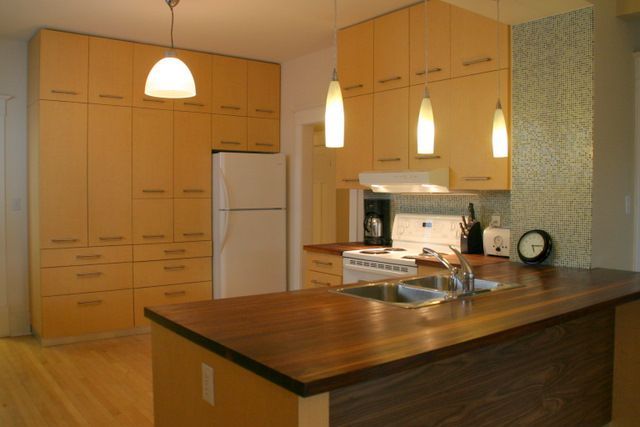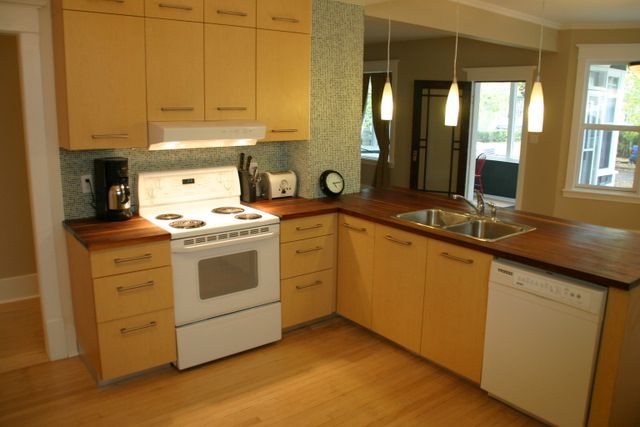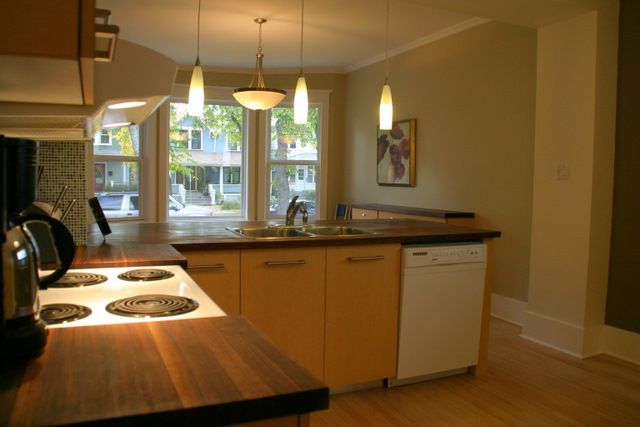Question
I am a contractor and typically source wood countertops as fully finished pieces, but the cost is starting to make me lose jobs. I can't seem to get consistent pricing with my local cabinetmaker and my little jobs are small potatoes for him.
I am considering buying a black walnut blank from a company called Craft Art in their Do-It-Yourself online store and doing the finish myself since there are no cutouts or even routed edges. I would love advice on these blanks and what finishing them is like. Though I have some familiarity with the Waterlox sealer and Waterlox satin finish they recommend, I've never used them for a countertop surface and am nervous about the application, food safety, and sheen level being too high for my client's particular taste.
Forum Responses
(Finishing Forum)
From contributor G:
Check customwoodcountertops.com out. They've done good work for me and seem to be fairly priced (for high-end work, that is). Do the DIY kits have any sort of warranty? Is it voided with a poor finish job?
I used Waterlox on a couple of tops I built and it worked fair at best. My finishing skills have greatly increased since then, so it might have been a combination of poor finishing skills and bad product. Anyway, you'll need to coat all sides equal amounts and I think Waterlox recommends 3-4 coats.
The biggest problem is the overnight drying time. Figuring that you can only do one side at a time, you'll need at least a week to apply the finish. This is hard to swallow compared to spray lacquers, etc.
The second biggest problem is application and finished smoothness. I was wiping it on and I don't think they recommend a spray application, so slow going. I also couldn't get it to lay down very nicely so the finish was a little rough - rough for guys that know better, but my customers never complained. Years later I read about buffing it and that would have helped, but the slow application time and outsourcing to guys that do this stuff for a living were enough for me to stop making my own tops.



Contributor D, thanks for those pics. They are really nice. Did the linseed oil leave water issues by the sink? The homeowners are concerned about that even though it won't have a sink. They plan on using it as a service piece for things like a wet bar, buffet service and occasional casual dining spot. I know they talked about using separate cutting boards, but seem to understand that it is wood at the end of the day and will get marks in it. I agree with you though, and have almost decided to go with what they recommend, which is Waterlox.
In the directions they recommend to homeowners, the dry times are long, but you only have to do one side and the actual billable work time is low. You guys seem to know your stuff. Would love if you wanted to check out their instructions and throw some feedback my way.
I do not recommend a gloss finish on an open pore wood. I would go with an oil finish like a wiping poly. You can get a satin sheen version. Apply several light coats waiting overnight and after it dries for a day or two, rub it out with four odd steel wool and paste wax in order to level it out and remove any dust nibs. Looks great!